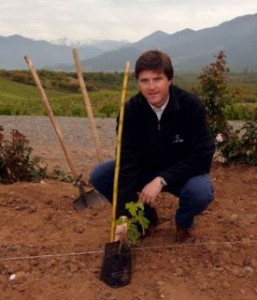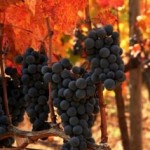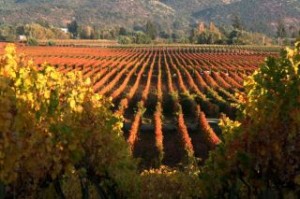Viña Casa Silva: Veritable Carmenère Specialist
Following on from Viña Casa Silva ’s small scale terroir research, which revealed quite marked genetic variability in carmenère vines, the company is investing in another research project, this time to identify the best carmenère clones for use in Chile.
The project has been launched in conjunction with research institutions in Chile and Germany.
Casa Silva already has a reputation for making fine quality carmenère wines and the company is already making Chile’s star grape variety, carmenère, its own. Their investments appear to bear fruit, as Mario Pablo Silva, managing director of Viña Casa Silva explained: “we think carmenère is a very important grape for Chile, and we trust carmenère will produce differentiation for Chile [from other countries]. Casa Silva sells as much carmenère as cabernet sauvignon, and we sell more carmenère than cabernet sauvignon of our top wines.”
The research aims including looking at the fine balance of herbaceous green pepper notes, which in certain small proportions are a complexing factor, but more than this turn into a marmite issue. Additionally, carmenère is susceptible to unpredictable fruit set, so finding clones that are reliable for this aspect will be high on the agenda.
Pyrazines
Along with the herby green pepper notes are other pyrazines such as green asparagus, green beans and peas flavours. Too much of these is considered a fault, and not enough of them can make the wine a little one-dimensional. These aromas are called pyrazines, and existing carmenere clones show a near four-fold variation in amounts, from 40 to 150 nanograms/litre (ng). These are infinitessimally tiny amounts, but which are easily detectable on the palate.
Professor Yerko Moreno, director of grape and wine research at the University of Talca, is one of the collaborators in the research project. He said “We would like around 60-70ng. We don’t want to lose the peppery characters, otherwise it wouldn’t be carmenère.”
But what creates the pyrazines, and how to manage the vineyard to optimise the quantity? Moreno said: “By removing crop we increased the amount of pyrazine in the remaining crop. The pyrazine produced in the leaves concentrates in the fewer bunches that remain.
“High water stress got rid of pyrazines, but it got rid of everything else as well. We don’t think stressed vines produce good quality, we think happy vines produce good quality.”
Moreno went on “we can harvest carmenère earlier if we treat it well in the vineyard. If we stress the canopy, it won’t get rid of the green characters. But by keeping the canopy alive late in the season, we ended by harvesting earlier.” Managing director of Casa Silva, Mario Pablo Silva, added “we like the greenness of the carmenère. Winemaker friends’ are surprised to see us harvesting Los Lingues in April and they are thinking to harvest in May. If you taste a really good carmenère you taste freshness and greenness.” But not a lot of greenness. Though the earlier harvest helps to retain a little more natural acidity for the freshness.
Variable fruit set
Another of the issues with carmenère is a variable fruit set, which directly affects the yield and therefore profitability of the harvest. Variable fruit set results in both ripe and unripe berries on one grape bunch. Moreno said: “doing pollen analysis we found up to 30% of carmenère pollen grains has faults.”
Clones
One of the ways to gain more control over these issues is to breed carmenère for the desired traits – better fruit set, limited pyrazines.
Specific clones of most grape varieties exist for various traits, such as small berries, or drought resistance, or stronger wood etc. But at the moment there are no official clones available of carmenère. Carmenère is just carmenère, with all vineyards (not just Casa Silva) being a massale (vineyard) selection.
There are, however, some candidate clones. Moreno said it takes 7 to 8 years of information gathering and validation before a clone can be registered and authorised, adding “at the moment we have 42 candidates at the University”.
This will open up the whole clone versus vineyard selection debate on carmenère, as Pablo Silva said: “the best wines may still be produced from massale selection; we don’t know.”
Over the next few years they’ll be working at the genetic level, studying the expression of the gene producing pyrazines, as well as researching the faulty pollen grains to improve fertility. And if they solve the various issues, Moreno said: “we will have a super-carmenère, which should give better wines.” You can’t fault that.
No results are expected for two or three years.






